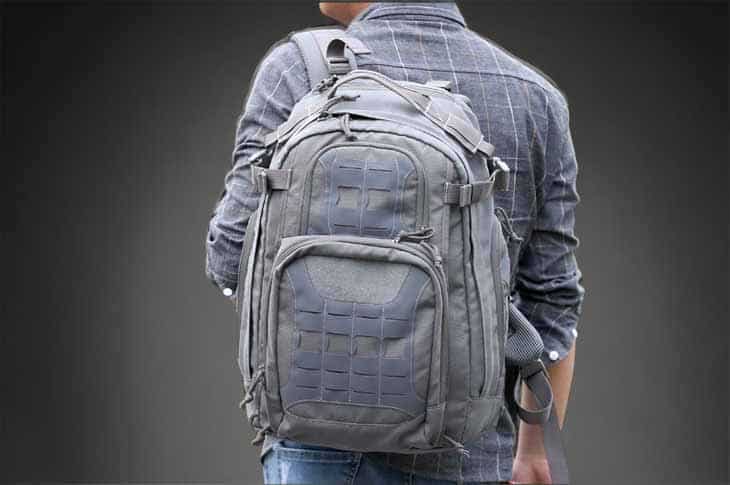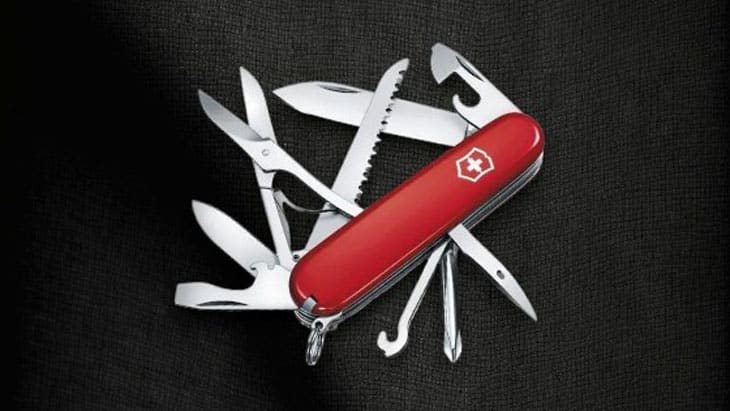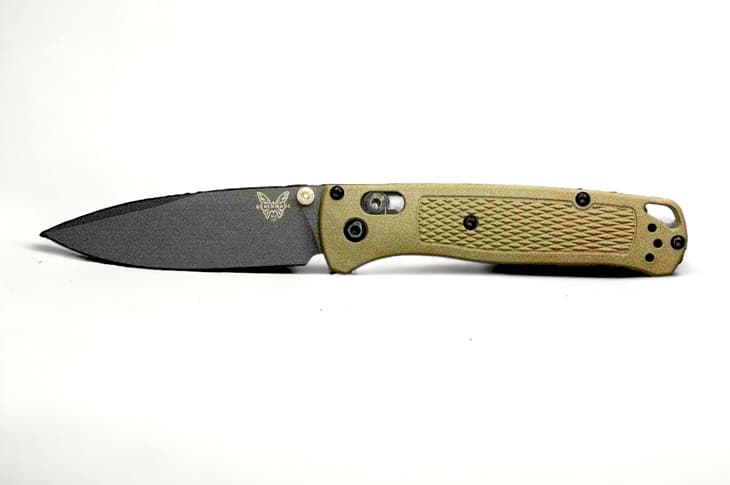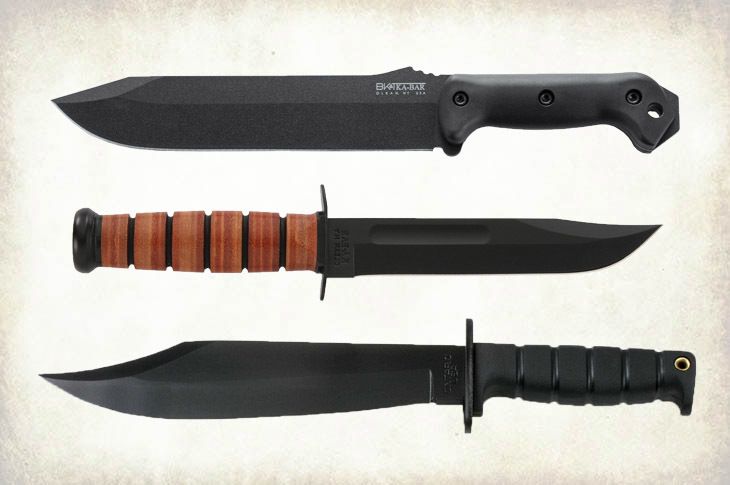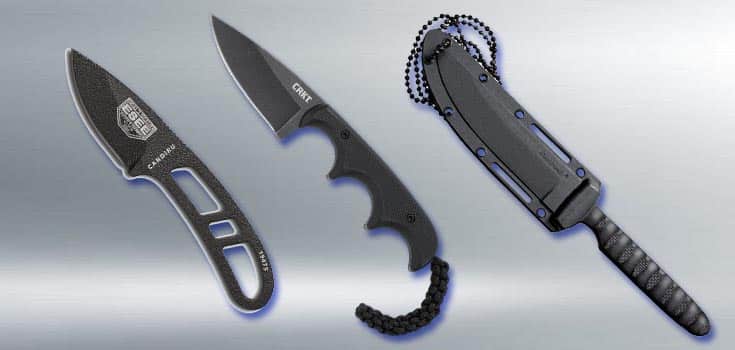EDC Knife Maintenance Guide: Keep Your Blade in Top Shape
Wondering how to keep your EDC knife in prime condition? Our EDC knife maintenance guide has all the answers you need.
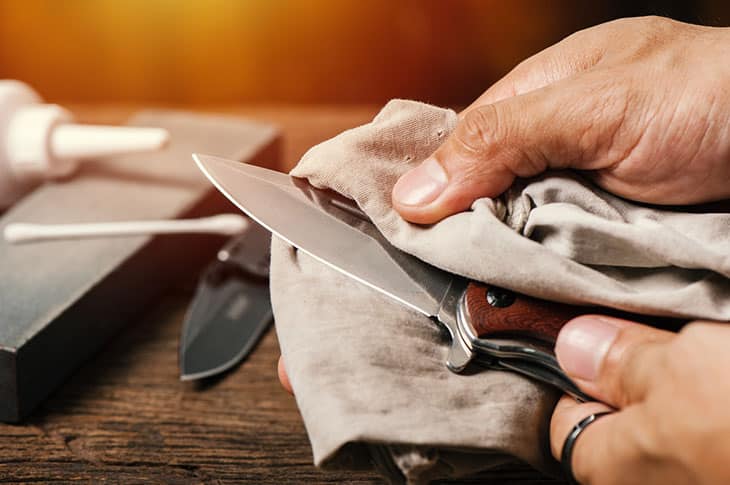
If you’re the proud owner of an everyday carry (EDC) knife, you know the value it adds to your life. From opening packages to emergency situations, your EDC knife is your trusty companion.
But, just like any tool, it needs proper care and maintenance to ensure it stays sharp and ready for action.
In this EDC Knife Maintenance Guide, we’ll take you through the essential steps to keep your blade in top-notch condition.
Why EDC Knife Maintenance Matters
Taking care of your EDC knife is vital for several reasons.
A properly maintained knife not only functions more efficiently but also enjoys an extended lifespan.
Moreover, using a clean and well-sharpened blade is safer, as it lowers the likelihood of accidents. By adhering to the advice provided in this guide, you can ensure your EDC knife remains a trusty companion for years to come.
Gather Your Supplies: Essential Tools for EDC Knife Maintenance
Before diving into the maintenance steps, it’s essential to assemble all the required tools to carry out the job effectively.
Here’s a curated list of essential items for EDC knife care, accompanied by a few well-regarded product examples to help you make a well-informed decision:
- Soft cloth: Opt for a microfiber or lint-free cloth, as these materials are perfect for cleaning your knife without causing any damage to the surface.
- Knife oil or lubricant: A good-quality oil, such as Break-Free CLP, Ballistol, or Sentry Solutions Tuf-Glide, will help protect your knife from rust and corrosion while ensuring smooth operation.
- Cleaning solution or soap: Mild dish soap or a specialized knife cleaning solution like M-Pro 7 LPX will work well for removing dirt and grime without causing damage to your knife’s finish.
- Water: Warm water is best for loosening dirt and debris, but avoid submerging your knife in water, as this can lead to rust.
- Sharpening stone or knife sharpener: A quality sharpening stone, such as the Lansky Deluxe 5-Stone Sharpening System or the Spyderco Sharpmaker, will help you maintain a razor-sharp edge on your EDC knife. Alternatively, you could use a knife sharpener like the Work Sharp Guided Field Sharpener for a more user-friendly option.
- Q-tips or small brush: A nylon brush or an old toothbrush is perfect for cleaning hard-to-reach areas and removing stubborn debris. Q-tips can also be handy for cleaning tight spots.
- Toothpick or pin: A toothpick or sewing pin can be useful for dislodging dirt and grime from small crevices and pivot points.
With your supplies ready, let’s move on to the maintenance steps. Remember, investing in quality maintenance tools and products will pay off in the long run by ensuring your knife stays in top-notch condition.
Step 1: Disassemble Your Knife (If Possible)
Disassembling your EDC knife might seem daunting, but it’s crucial to access all the hidden areas that collect dirt and grime.
Not all knives can be disassembled, so first, check your knife’s manual for guidance. If possible, take apart your knife while keeping track of all the pieces – you can even take photos to help with reassembly later. You may be interested in reading this comparison between folding vs fixed blade edc knives.

Step 2: Clean the Blade and Handle Thoroughly
Imagine you’ve just returned from an outdoor adventure, and your knife has seen its fair share of use.
To clean it, start by gently wiping down the blade and handle with a soft cloth to remove visible debris.
Then, mix some warm water with a mild cleaning solution or soap, dampen the cloth, and carefully scrub the blade and handle. Be cautious around the sharp edge to avoid injury.
For those hard-to-reach spots, use Q-tips or a small brush to dislodge accumulated dirt.
Step 3: Dry Your Knife Completely
Properly drying your knife is a critical step in the maintenance process. After cleaning, use a soft cloth to thoroughly dry the blade, handle, and any other components.
Removing all moisture helps prevent rust and corrosion, ensuring your EDC knife remains in tip-top shape for years to come.
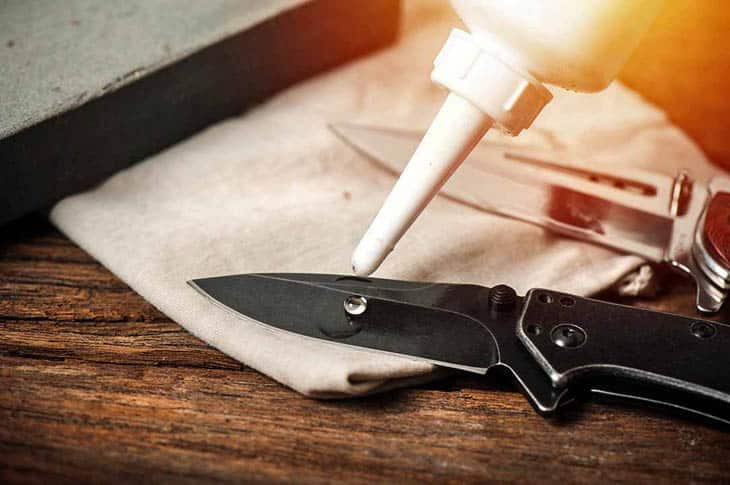
Step 4: Lubricate the Blade and Pivot for Smooth Operation
To keep your knife opening and closing smoothly (if it’s a folder), lubricate the blade and pivot area with a high-quality knife oil or lubricant.
Apply a thin layer, ensuring you cover the pivot area where the blade meets the handle. Lubricate any other moving parts, too. Then, use a soft cloth to wipe away any excess oil.
Step 5: Reassemble Your Knife (If Necessary)
If you’ve disassembled your knife for cleaning, now’s the time to put it back together. Consult your knife’s manual for proper reassembly instructions, making sure all parts are securely in place.
Those photos you took earlier will come in handy here, ensuring a smooth reassembly process.
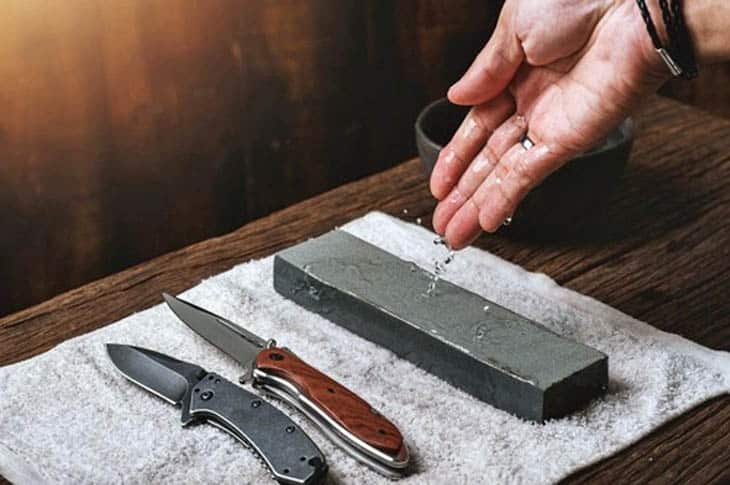
Step 6: Sharpen Your Knife and Strop for Optimal Performance
A razor-sharp edge is essential for your EDC knife to perform at its peak. Whether you’re cutting rope, preparing food, or performing countless other tasks, a well-sharpened and stropped blade makes all the difference.
To maintain a keen edge, use a sharpening stone or knife sharpener suited to your knife’s specific requirements, followed by stropping to achieve an even sharper and more polished edge.
First, familiarize yourself with the manufacturer’s instructions to determine the proper sharpening angle and technique for your knife.
Each knife type and brand might have unique requirements, so it’s crucial to follow the guidelines to avoid damaging your blade.
When using a sharpening stone, make sure it’s wet or lubricated according to the manufacturer’s recommendations.
Hold the knife at the appropriate angle against the stone, and apply even pressure while sliding the blade across the surface. Repeat this process several times, alternating sides to maintain a balanced edge.
If you prefer a knife sharpener, follow the instructions provided by the sharpener’s manufacturer. Many sharpeners are designed for ease of use, with built-in guides to help you maintain the correct angle.
Slide the blade through the sharpener, following the recommended number of passes to achieve a razor-sharp edge.
After sharpening, strop your knife to further refine and polish the edge. Stropping involves running the blade along a leather strop or other appropriate material, like a thick piece of denim or even a sturdy cardboard.
Hold the knife with the edge trailing and the spine leading, maintaining the same angle you used for sharpening.
Gently glide the blade along the strop, moving away from the edge. Repeat this process, alternating sides, until you achieve a polished, razor-sharp edge.
Regular sharpening and stropping not only enhance your knife’s performance but also preserve its lifespan by preventing excessive wear on the blade.
By incorporating sharpening and stropping into your EDC knife maintenance routine, you’ll ensure your knife remains a reliable and efficient tool for years to come.
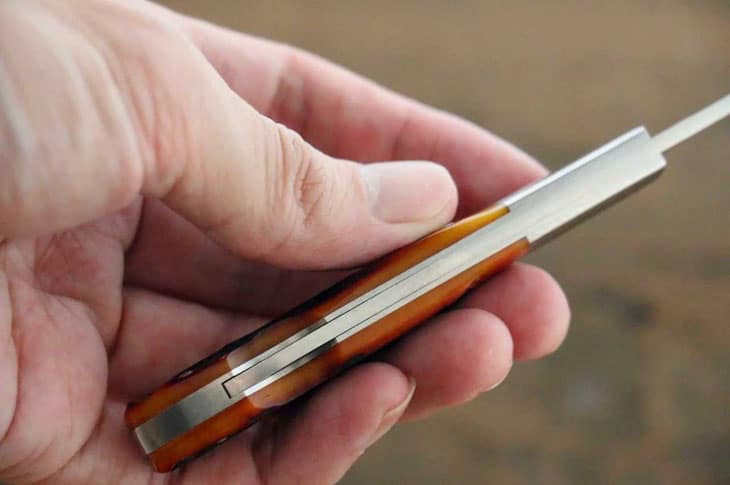
Step 7: Inspect Your Knife for Total Confidence
With your EDC knife reassembled, it’s time for a thorough inspection. Check for any lingering dirt, debris, or moisture, and make sure the blade opens and closes smoothly.
Test any locking mechanisms to ensure they’re functioning correctly. Address any issues you find, and you’ll have a reliable, well-maintained EDC knife ready for action. See our guide to edc knife safety.
Bonus Tips: EDC Knife Maintenance
- Store your knife properly: When not in use, keep your EDC knife in a dry, cool place away from moisture and direct sunlight. This helps prevent rust and corrosion.
- Avoid using your knife for tasks it’s not designed for: Using your EDC knife for tasks like prying, screwing, or hammering can damage the blade or other components, reducing its lifespan.
- Invest in a quality EDC knife: A well-made knife, like those featured on EDC Fixed Blade Knives, will not only perform better but also last longer with proper care and maintenance.
- Comprehensive Guide to Pocket Knife Sharpening
Taking care of your EDC knife is an essential part of owning one. Regular cleaning, lubricating, and sharpening will ensure that your knife stays in good condition for years to come.
By following this maintenance guide, you’ll have a blade that is well taken care of.
So, next time you reach for your ESEE Izula 2 or Benchmade Hidden Canyon Hunter, you’ll be confident that it’s ready for action.
If you want to know what items you should carry everyday, then check out our comprehensive EDC Gear List.


